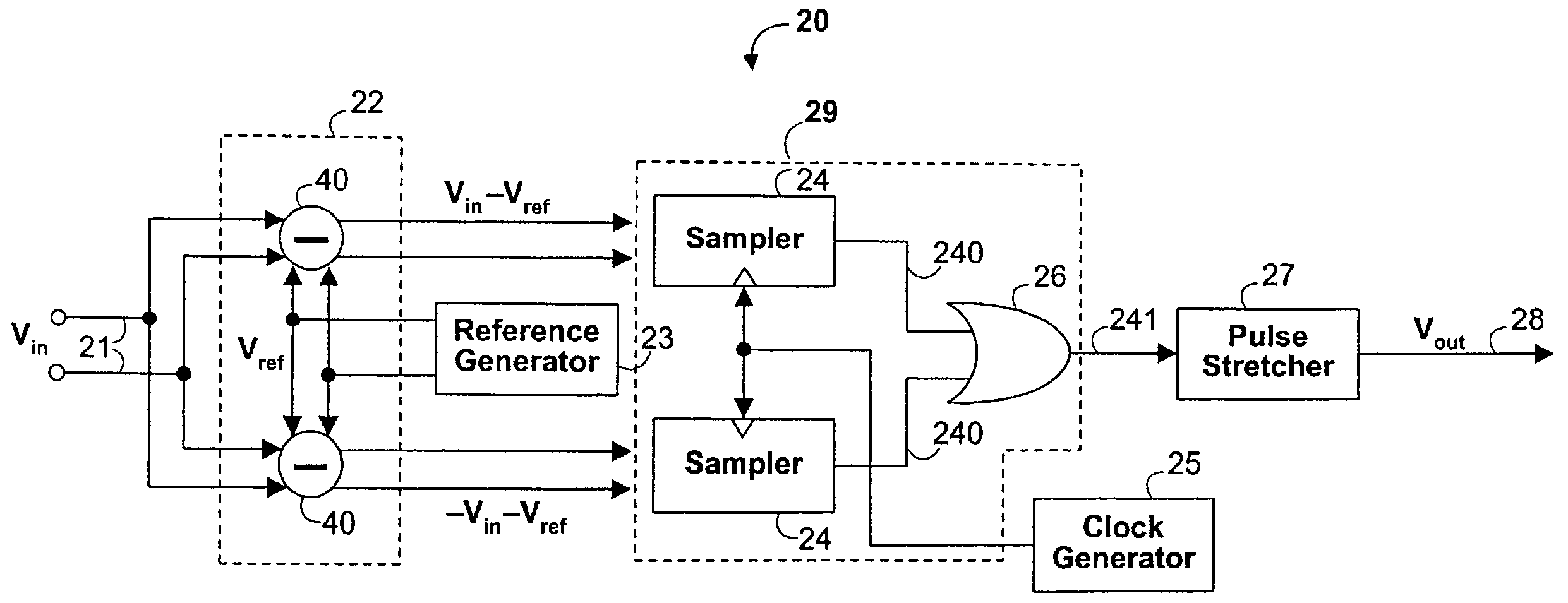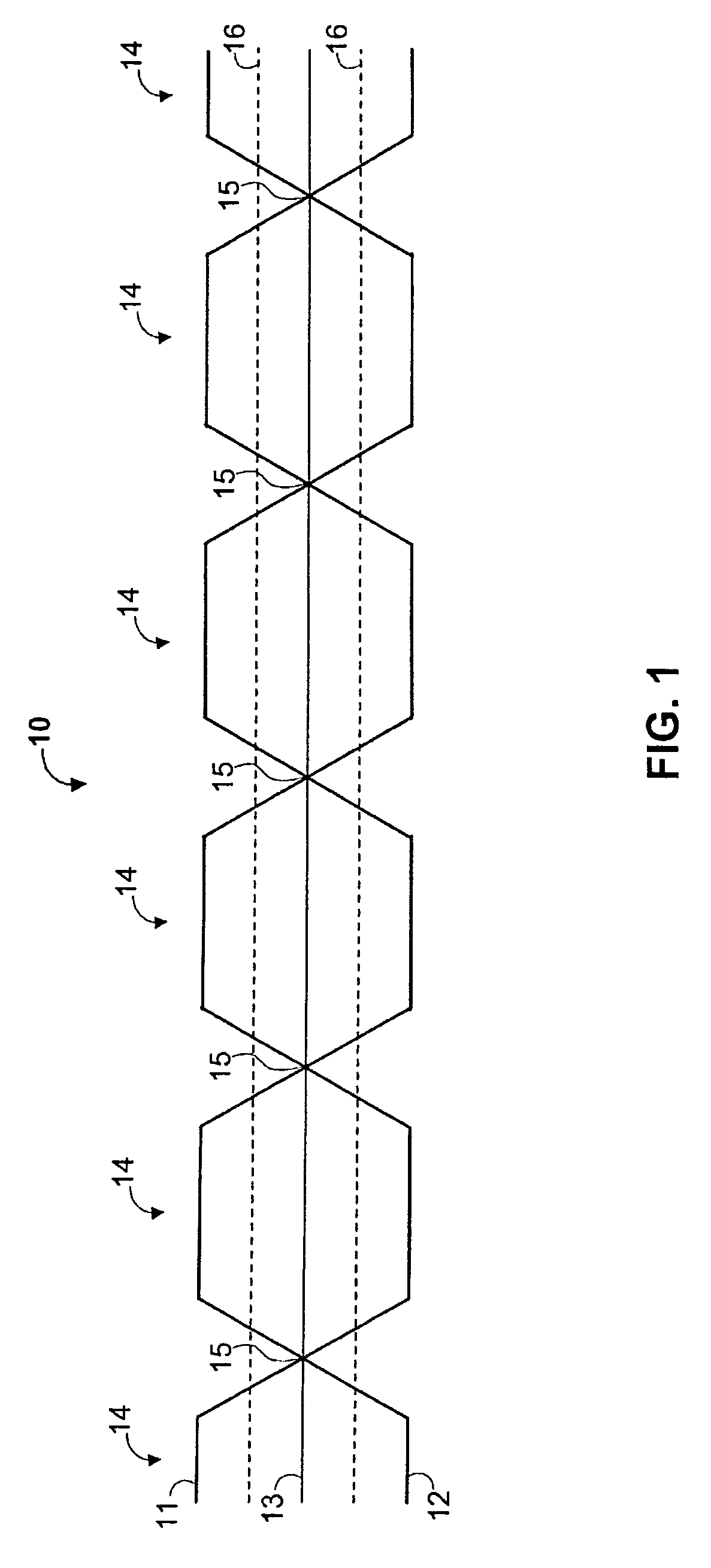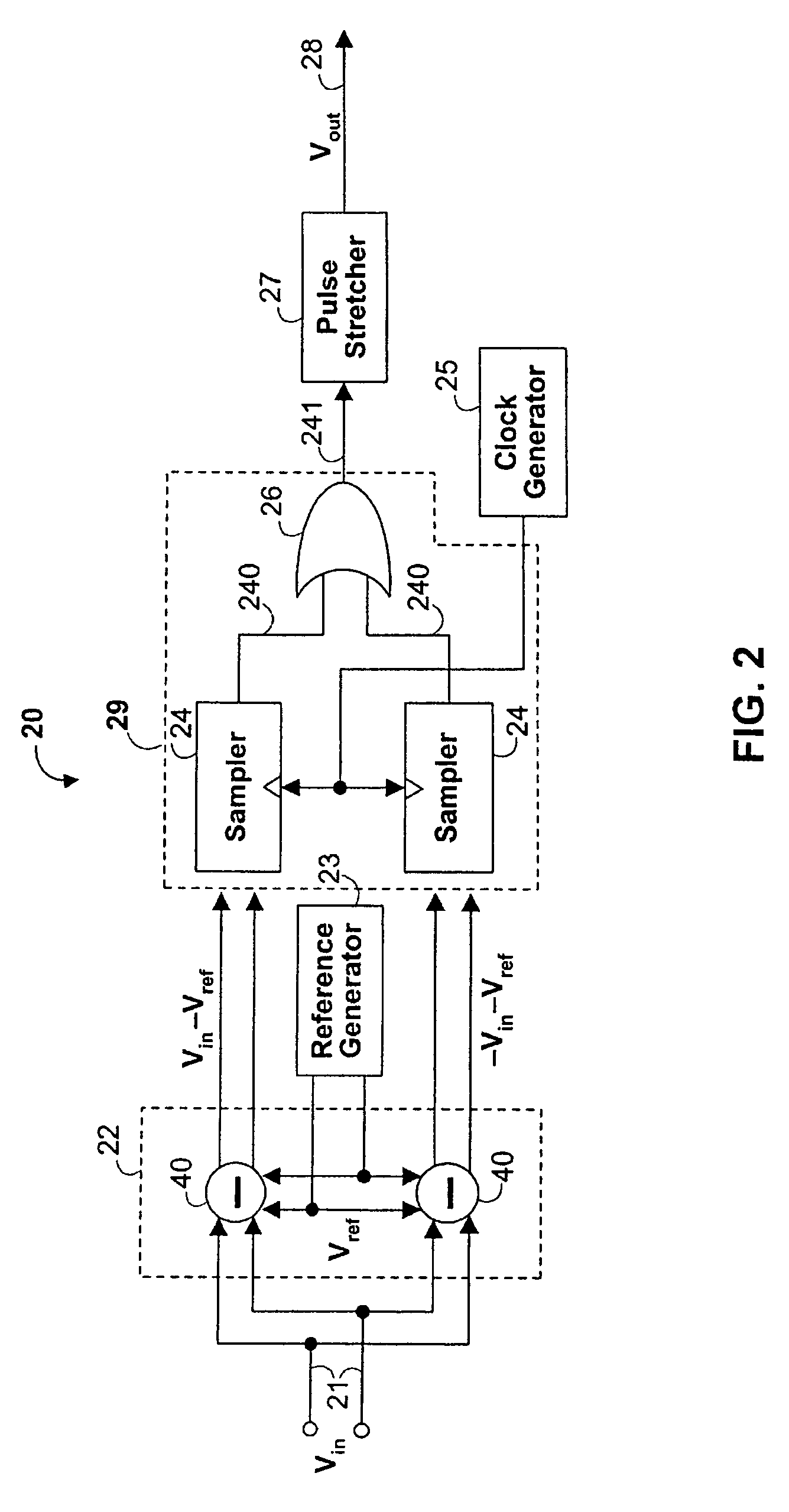High-precision signal detection for high-speed receiver
a signal detection and high-precision technology, applied in the field of high-speed receiver signal detection circuits, can solve problems such as the failure of the signal detection system to recognize a valid incoming data signal, and achieve the effect of maximizing power savings
- Summary
- Abstract
- Description
- Claims
- Application Information
AI Technical Summary
Benefits of technology
Problems solved by technology
Method used
Image
Examples
embodiment 30
[0029]Signal 10, input at 21, is compared at comparison signal generator circuitry 22 to a reference voltage generated by reference voltage generator 23. It is preferable that in the case of a differential signal 10, the reference voltage have a common mode identical or nearly identical to the common mode of signal 10, so that an accurate difference is compared to the threshold level. A preferred embodiment 30 of a reference voltage generator capable of generating a reference signal with the appropriate common mode value is shown in FIG. 3.
[0030]Reference voltage generator 30 preferably includes a two-stage amplifier 31, a constant current source 32 and resistor ladder 33 connected between constant current source 32 and the output of two-stage amplifier 31. It is preferable that all resistors in resistor ladder 33 have the same resistance value, but it is only necessary the members of each pair of resistors about midpoint 330 have identical values. Thus, both resistors 331 preferabl...
embodiment 50
[0037]It is desirable that signal 241 be high long enough to activate the remainder of the receiver. A suitable duration might be twice the period of the clock used in the logic circuit involved—e.g., in the case of a receiver (not shown) having a physical coding sublayer (PCS) sampling clock of 40 ns, signal 241 preferably should be high for 80 ns. To achieve that result, pulse stretcher 27 preferably elongates the duration of signal 241. One preferred embodiment 50 of pulse stretcher 27 is shown in FIG. 5.
[0038]In pulse stretcher 50, signal 241 preferably is input to both a strong NMOS transistor 51 and a weak PMOS transistor 52, having a shared output 53 connected both to Schmitt trigger 54 and to ground through capacitor 55. If signal 241 goes high, strong NMOS transistor 51 will quickly discharge capacitor 55, causing Schmitt trigger 54 to hold a zero output 540 which is inverted by inverter 56 to produce a high on signal detect output 28, which will remain until capacitor 55 c...
embodiment 60
[0039]A preferred embodiment 60 of a sampling clock generator 25 is shown in FIG. 6. Sampling clock generator 25 preferably includes a main oscillator 61 and a low-speed oscillator 62. Preferably, both oscillators 61, 62 are three-stage ring oscillators. Each ring oscillator 61, 62 preferably includes a NAND-gate 600 in its respective ring which can be used to turn off clock generator 25 by applying a “0” at input 601 to force a “1” output from each NAND-gate 600 and thereby stop each oscillator 61, 62 from oscillating.
[0040]Each stage 63 of ring oscillator 61 includes an RC circuit 64 that governs the frequency of output 65. RC circuit 64 preferably includes a resistor or other resistance 40 and two capacitors 641, 642. Each capacitor 642 preferably is connected between resistor 640 and ground, while each capacitor 641 preferably is connected between resistor 640 and the output of oscillator 62. As the output voltage 70 (see FIG. 7) of oscillator 62 varies, the voltage across each ...
PUM
 Login to View More
Login to View More Abstract
Description
Claims
Application Information
 Login to View More
Login to View More - R&D
- Intellectual Property
- Life Sciences
- Materials
- Tech Scout
- Unparalleled Data Quality
- Higher Quality Content
- 60% Fewer Hallucinations
Browse by: Latest US Patents, China's latest patents, Technical Efficacy Thesaurus, Application Domain, Technology Topic, Popular Technical Reports.
© 2025 PatSnap. All rights reserved.Legal|Privacy policy|Modern Slavery Act Transparency Statement|Sitemap|About US| Contact US: help@patsnap.com



